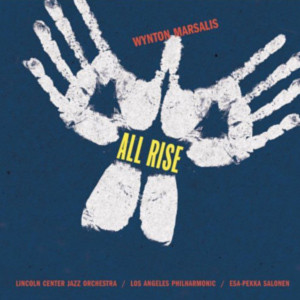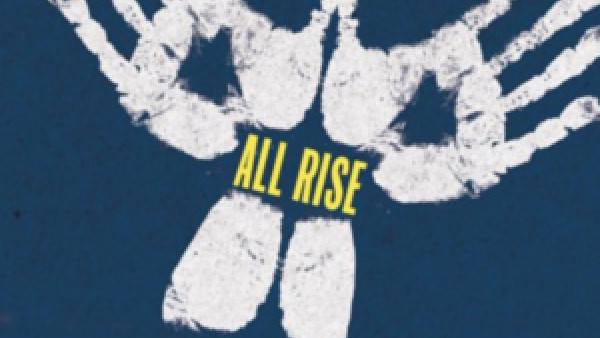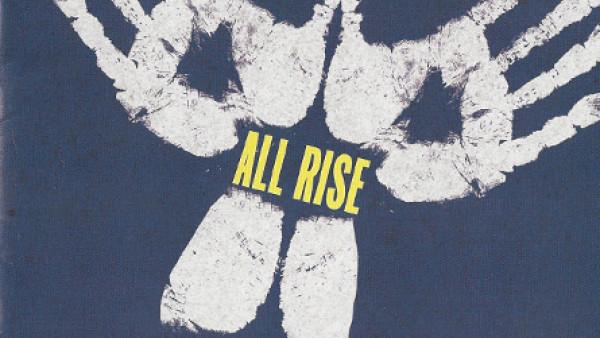Marsalis’s Daring Symphonic Step
Wynton Marsalis’s tap didn’t turn off in 1999. Eight new discs bear his name, ranging from new extended jazz works to rearranged Jelly Roll Morton and Thelonious Monk; he has a seven-CD boxed set of live material; six months of the year were spent touring worldwide and playing the music of Duke Ellington. And finally, in its premiere performance on Wednesday night at Avery Fisher Hall, there was ‘‘All Rise,’‘ a symphonic piece commissioned by the New York Philharmonic in a collaboration with Jazz at Lincoln Center.
With someone as busy as Mr. Marsalis, one has to wonder — even before hearing a piece like ‘‘All Rise’‘ — about the difference between deadline work and art based on a need to communicate. ‘‘All Rise’‘ is both. Called upon to write a millennium piece, Mr. Marsalis wrote something appropriately large — about 200 musicians, including the Philharmonic, the Lincoln Center Jazz Orchestra and the Morgan State University Choir, filled an extended stage — and appropriately accomplished.
It has little in the way of either simple pleasures or flat-out sublimity; instead of narrative development there are juxtapositions and surface details galore, enough to keep you interested during the performance and make you wonder afterward what it was you heard. Mr. Marsalis did not take the jazz composer’s easy way out; there are no long jazz-band sections larded up with improvised solos. It’s about 100 minutes of written music, and it’s a work that can be prized on intellectual grounds but throughout remains difficult to love.
The theme of ‘‘All Rise’‘ shrewdly connects grand millennial thoughts with a deeply American theme. ‘‘The 20th century has been the century of communication,’‘ Mr. Marsalis writes in the program notes; ‘‘the 21st will be the century of integration.’‘ Bearing out this concept in music, the composer has merged orchestral writing both popular (sweet, sweeping, film-soundtrack pastorality) and semipopular (repetitive unison minimalism reminiscent of Steve Reich) with small-group jazz and gospel music, and added bits of clave, Scots-Irish reels and blues.
Sign up for the Watching Newsletter
Get recommendations on the best TV shows and films to stream and watch, delivered to your inbox.
These different disciplines weren’t just put side-by-side, secure within their own boundaries; they were often playing one another’s roles, with string sections playing bluesy glissandos in unison and saxophones playing with classical technique.
Mr. Marsalis puts an easygoing religiosity into a lot of his work, and a piece about the cross-fertilization of humanity is bound to have some of it. To that end, the choir repeated phrases like ‘‘Save us for we know not what we do,’‘ ‘‘Look beyond’‘ and ‘‘the glory of God’‘ — fragmentary millennial cries that begged for development.
Orchestral effects fascinate Mr. Marsalis, and they became the lasting memory of ‘‘All Rise.’‘ In ‘‘Save Us,’‘ the Philharmonic’s percussion section, with the Jazz Orchestra’s drummer Herlin Riley, began playing a clave rhythm together; the choir sang in clashing counterpoint with itself; violins held a single note quietly.
Out of this the sound of a jazz quartet suddenly emerged with Mr. Marsalis playing an agitated solo. In ‘‘Look Beyond,’‘ the strings droned another unison note, and from that sprouted a quiet two-beat New Orleans jazz rhythm, which shortly subsided.
Then the orchestra created a wave of romantic, major-key playing; next a funk rhythm began, with strings accenting each beat. There were exciting, jarring juxtapositions, and there was experimentation with sound across the field of the orchestra. One might call ‘‘All Rise’‘ the product of a jump-cut imagination, except that Mr. Marsalis’s individual parts are rather long, and the sections trickled into each other.
The problem was what happened in between segues. Much of ‘‘All Rise’‘ is odd music, slightly tortured in its ambition, and though Mr. Marsalis was largely successful in his project of dissolving musical idioms into each other, one struggled to find the true character of the piece, partly because the work lacks memorable themes, partly because it is heavy with formal ideas that don’t seem to have roots.
And what jazz there is in ‘‘All Rise’‘ curiously seemed drained of the strengths of Mr. Marsalis’s best small-band music, in which arrangements rule, and tone colors of each individual instrument, even bass and drums, are bright and strong. These were more like official portraits of jazz tropes, from a train song called ‘‘Expressbrown Local’‘ to funeral marches, slow blues and post-Coltrane harmonies.
The first four movements, conceived as the joyous third of a 12-movement piece (constructed to mirror a 12-bar blues form), were often dour; there’s never been so much dissonance in Marsalis’s music.
Even the last movement, which ended on a New Orleans march, was tense. ‘‘All Rise’‘ may be full of jazz and dance sections, but it is not jolly; its mood is not a feeling of security under the beneficent eyes of God but a mottled question about who we might become and what causes we may have to defend during a time of rapid growth and change.
By Ben Ratliff
Source: New York Times




